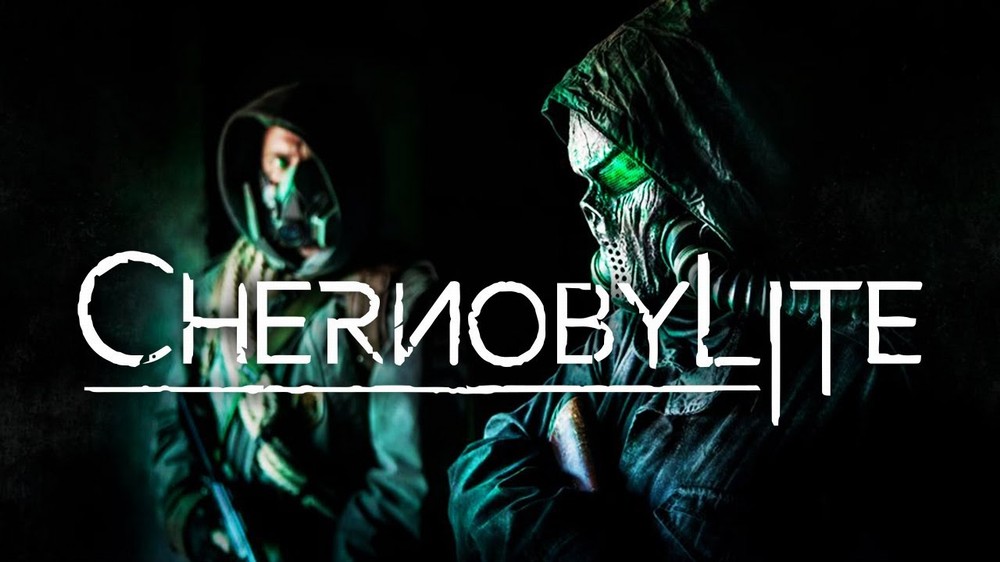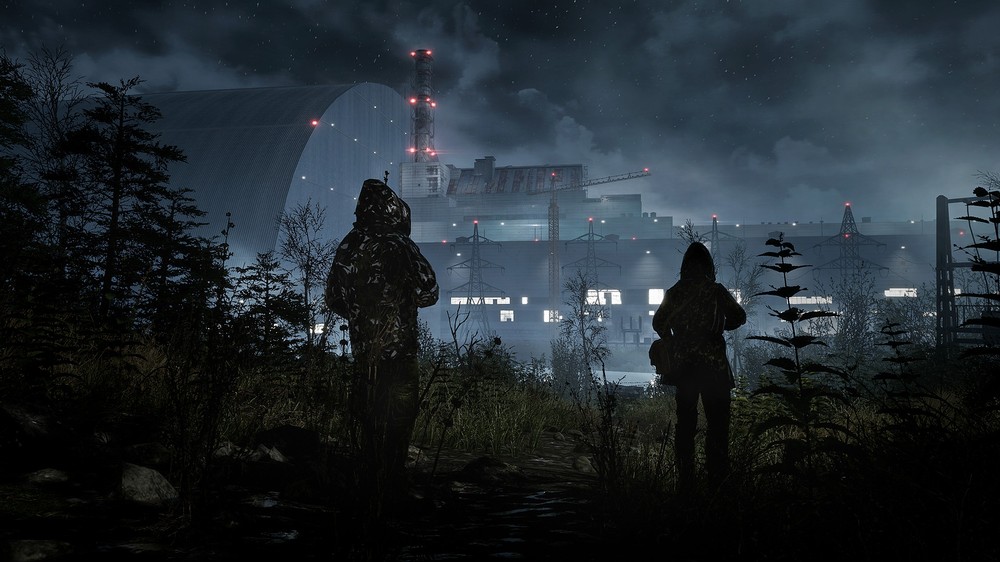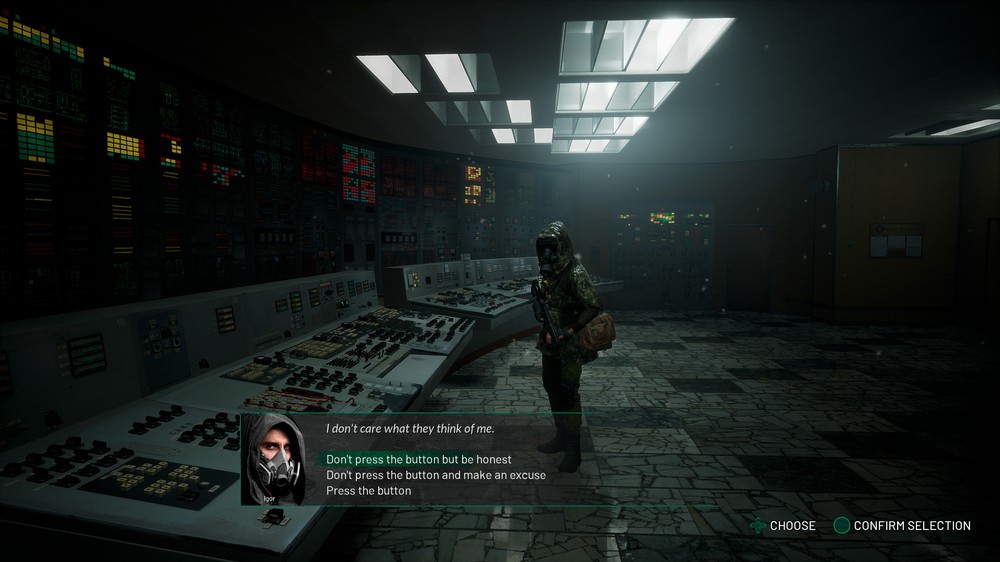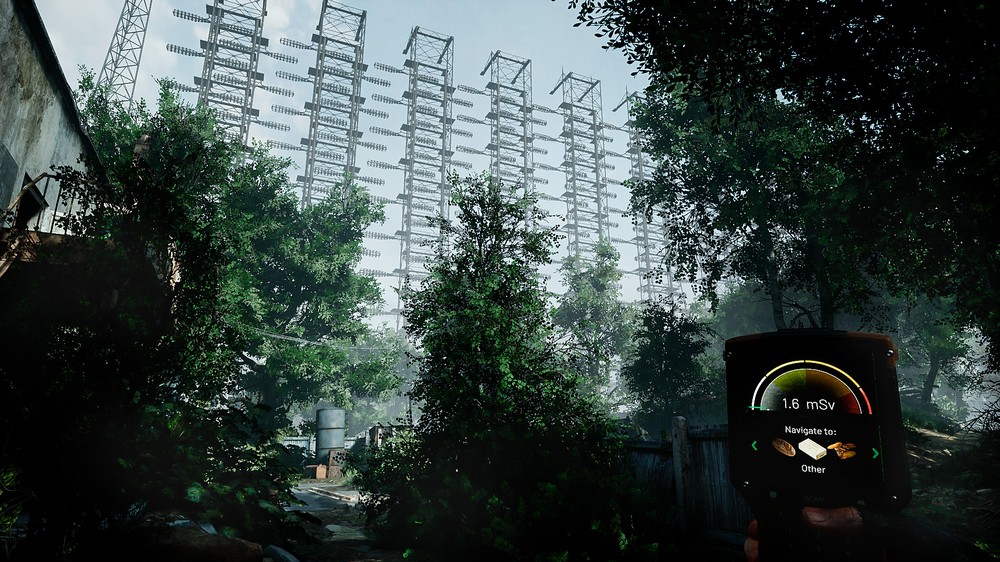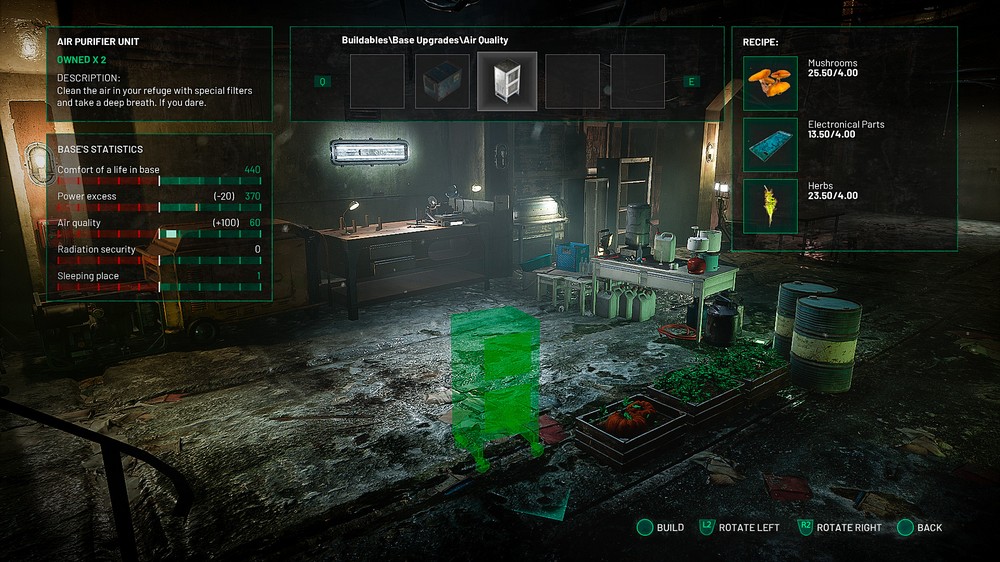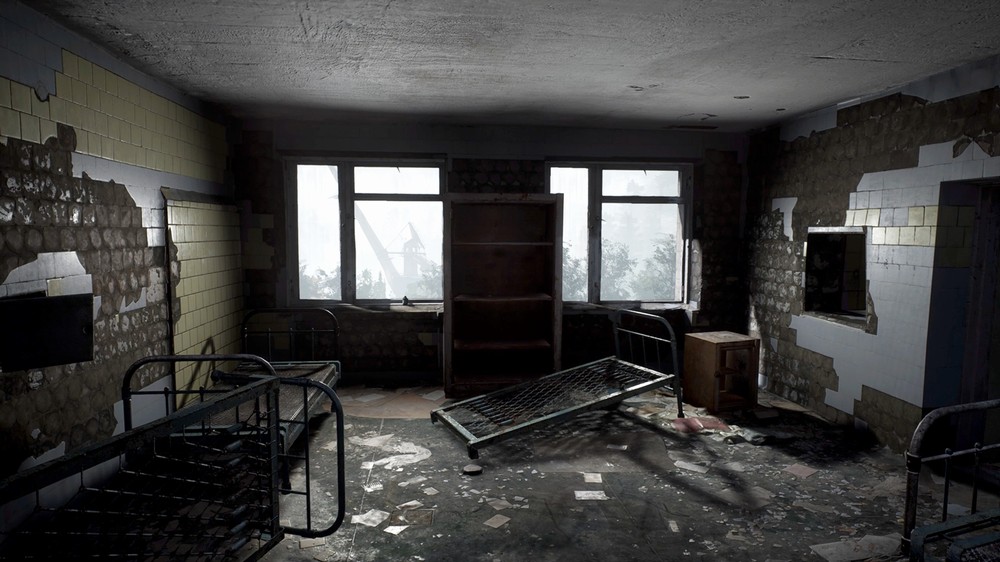At first glance Chernobylite would appear to be just another derivative knockoff of games like Metro, S.T.A.L.K.E.R. or any of the numerous Fallout games, but it only takes a few minutes of actually playing the game to see this is much, much more. Blending real-world locations and events with crazy paranormal, sci-fi themes, Chernobylite will have you exploring, looting, crafting, sneaking, and engaging in deadly combat with man and monster as you search for your lost love, Tatyana.
Previously played and reviewed on the PC last year, I had a great time with Chernobylite both then and now; perhaps even more so now that the game has been given the royal RTX treatment, adding all new flashy lighting and reflections to bring this world to even greater levels of realism and life. While the PS5 obviously can’t match the presentation of a powerful PC it certain offers one of the best possible experiences on consoles with your choice of 60fps Performance mode rendering at 1080p or a Quality/Resolution mode rendering at 1512p; upscaling nicely to a 4K output. One additional perk is that the PS5 version does not suffer from the infamous shader-render stuttering issues currently plaguing PC games.
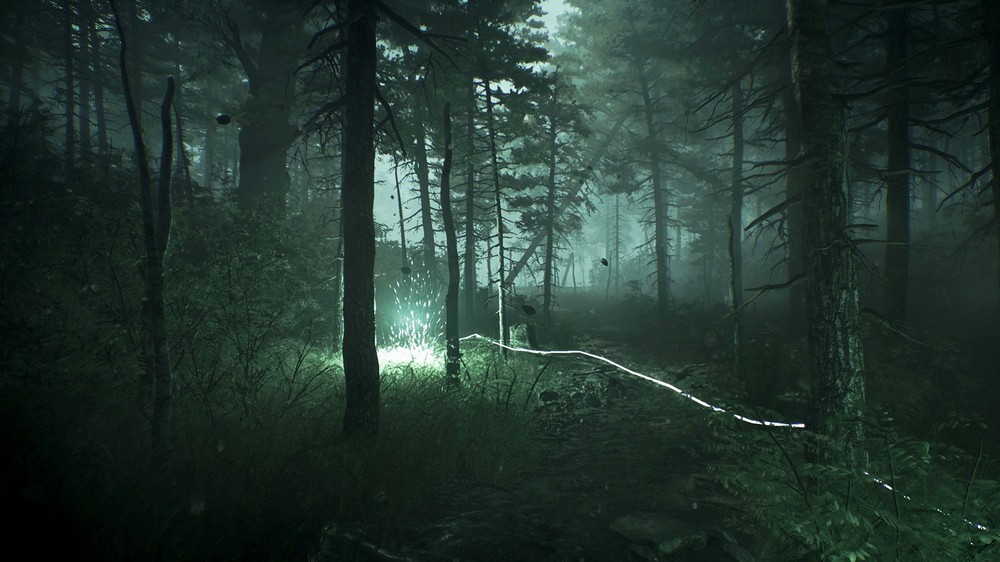 You’ll be playing Igor who we see in the opening movie traveling by train with Tatyana, but things turn sinister as reality shifts and we are left on a ghost train stuck in the woods following a ghostly image of Tatyana who beckons us to follow her deeper into the forest. The presentation at this point is outstanding with incredible environmental graphics, trees and grass blowing in the wind, eerie lighting and shadow, and fallout particles drifting around like aimless snowflakes. It’s all accompanied by a chilling soundtrack that continues throughout the duration of the game, creating and enhancing your emotional investment into the story and gameplay.
You’ll be playing Igor who we see in the opening movie traveling by train with Tatyana, but things turn sinister as reality shifts and we are left on a ghost train stuck in the woods following a ghostly image of Tatyana who beckons us to follow her deeper into the forest. The presentation at this point is outstanding with incredible environmental graphics, trees and grass blowing in the wind, eerie lighting and shadow, and fallout particles drifting around like aimless snowflakes. It’s all accompanied by a chilling soundtrack that continues throughout the duration of the game, creating and enhancing your emotional investment into the story and gameplay.
Unlike most games of the genre that are linearly driven by the story, here you are given unprecedented freedom to play Chernobylite pretty much how you see fit; at least once you’ve completed the somewhat linear intro and tutorial section. At first the game appears to have the standard crafting loop of collecting “junk” and turning those ingredients into something beneficial, but all too soon you are introduced to base building where you can collect scrap and turn it into useful equipment for your home base; everything from a workbench to a bed and much more. You also get to recruit companions and build a team that you can assign to daily missions, sending them out to forage for food, ammo, and other supplies. The larger your team the more objectives you can complete, which is crucial because missions expire in a day or two.
 The core gameplay loop is completing these daily assignments for both you and your men, as well as slowly building up your base and other resources to tackle the increasing threat in the Zone. Igor has a nifty scanning device that can filter for a variety of resources, sending out a pulse to light up matching collectibles; a very useful tool indeed since the world design and environmental detail is surprisingly rich and complex, making it nearly impossible to find anything without this visual aid. You can carry a lot of items, most of it crafting materials while other more useful items can get assigned to quick access slots on the D-pad. Most items fall into either gear or food categories; something you learn when you start trading with vagabonds that wander the Zone.
The core gameplay loop is completing these daily assignments for both you and your men, as well as slowly building up your base and other resources to tackle the increasing threat in the Zone. Igor has a nifty scanning device that can filter for a variety of resources, sending out a pulse to light up matching collectibles; a very useful tool indeed since the world design and environmental detail is surprisingly rich and complex, making it nearly impossible to find anything without this visual aid. You can carry a lot of items, most of it crafting materials while other more useful items can get assigned to quick access slots on the D-pad. Most items fall into either gear or food categories; something you learn when you start trading with vagabonds that wander the Zone.
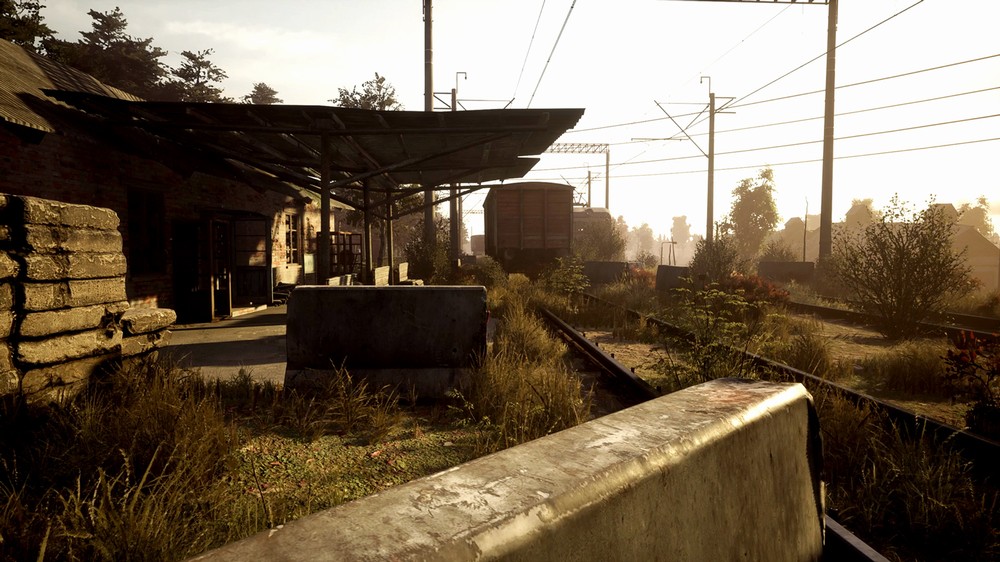 Igor is a professor in search of a rare substance called Chernobylite that seems to be a byproduct of the Chernobyl explosion in 1986. This substance has several unique properties including triggering telepathy as well as emitting exotic energy that can be used to power Igor’s portable wormhole generator that allows him to open a tear in space-time and travel through it. The game makes expert use of this wormhole concept as well as time-shifting sequences that flash back to the 1986 disaster where we see scientists and staff trying to avert the infamous explosion.
Igor is a professor in search of a rare substance called Chernobylite that seems to be a byproduct of the Chernobyl explosion in 1986. This substance has several unique properties including triggering telepathy as well as emitting exotic energy that can be used to power Igor’s portable wormhole generator that allows him to open a tear in space-time and travel through it. The game makes expert use of this wormhole concept as well as time-shifting sequences that flash back to the 1986 disaster where we see scientists and staff trying to avert the infamous explosion.
There is a lot going on in Chernobylite, both narratively and in balancing the mission assignments and base building where you need to account for comfort, air quality, radiation protection, and sleeping accommodations. Survival outside the bunker is just as problematic as you must monitor not only physical health but also your mental state (or psyche) and the effects of persistent radiation that slowly eats away at your max health unless treated with a variety of crafted remedies. You also have larger environmental modifiers that can be crafted to actually improve your surroundings, but these must be concealed so monsters and enemy soldiers can’t find and destroy them.
From a visual perspective Chernobylite truly shines with some of the most impressive graphics I’ve seen this year. The level of photorealism is off the charts here with high-resolution scans of real-world locations used for photogrammetry quality backgrounds, models, and textures. We’ve all probably played at least one game or seen one movie with that signature Ferris wheel and other park rides nestled into that large complex of buildings in Pripyat. There is even a VR experience for the Oculus Rift that takes you on a meticulously accurate tour of Pripyat and the power plant. Chernobylite rivals even that documentary-style footage to create a hauntingly original game space both inside and out. Combined with fantastic character animation, lighting, shadows, and other particle and special effects, this is an exciting and unforgettable experience.
To balance all the praise I’ve been heaping on Chernobylite it’s worth noting the experience might not be for everyone. The pace of the game is slow, favoring stealth over direct encounters and combat. The enemy AI is brutally unfair, and once they detect you they seem to have this magical awareness of your location despite any efforts to break line-of-sight or hide. While the Fallout 4-style base building is fun in theory and does give you some agency over your game experience this type of gameplay doesn’t always blend in with traditional first-person survival games.
 Those looking to explore the weapons’ side of things will find a rather disappointing selection of firearms with minimal upgrades and attachments; just another element that indicates stealth is prioritized over combat whenever possible. Your primary selection of weapons are pistol, shotgun, and machine gun, and the latter two are nearly impossible to find ammo for. There are a couple of other rare weapons that are so OP they nearly break the balance of the game. Enemies are also limited to maybe six types, most of which aren’t that scary and only threatening because of their Terminator-style AI and unbalanced scripting combined with poor aiming and no apparent targeting assist.
Those looking to explore the weapons’ side of things will find a rather disappointing selection of firearms with minimal upgrades and attachments; just another element that indicates stealth is prioritized over combat whenever possible. Your primary selection of weapons are pistol, shotgun, and machine gun, and the latter two are nearly impossible to find ammo for. There are a couple of other rare weapons that are so OP they nearly break the balance of the game. Enemies are also limited to maybe six types, most of which aren’t that scary and only threatening because of their Terminator-style AI and unbalanced scripting combined with poor aiming and no apparent targeting assist.
There is still plenty of fun to be had with Chernobylite and for the right type of gamer this could be your next Fallout 4 fix until something better comes along. Thoroughly exploring all the missions should make this experience last 10-12 hours, yet despite the non-linear approach to gameplay and the diversity that can arise from base and team building there is very little reason to replay Chernobylite. Most of the non-mission gameplay just seemed to artificially pad the experience, but I’m not the biggest fan of strategic base building unless it’s in a dedicated game such as Evil Genius 2.
 Chernobylite is a great addition to the Russian post-apocalyptic niche genre, and while it is certainly no substitute for a game like Metro it does offer just enough originality, suspense, and intrigue to give it a look. If you’re on the fence about the balance of actual gameplay versus wading through base-building and crafting trees then you might want to wait for it to go on sale, but I found the game refreshingly original where the good elements balanced out the slower and more tedious aspects of gameplay. It’s definitely worth a look.
Chernobylite is a great addition to the Russian post-apocalyptic niche genre, and while it is certainly no substitute for a game like Metro it does offer just enough originality, suspense, and intrigue to give it a look. If you’re on the fence about the balance of actual gameplay versus wading through base-building and crafting trees then you might want to wait for it to go on sale, but I found the game refreshingly original where the good elements balanced out the slower and more tedious aspects of gameplay. It’s definitely worth a look.
To see Chernobylite in action check out our PS5 first-look video where we complete the opening tutorial, do some base building, and even complete our first mission.

